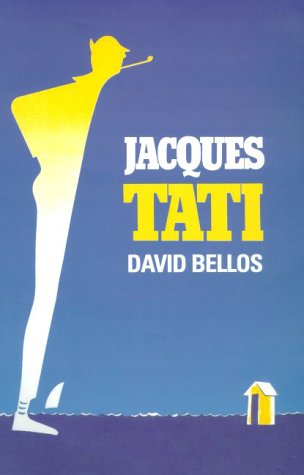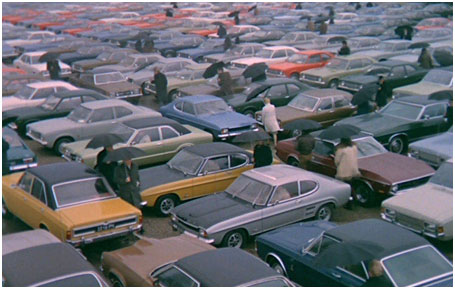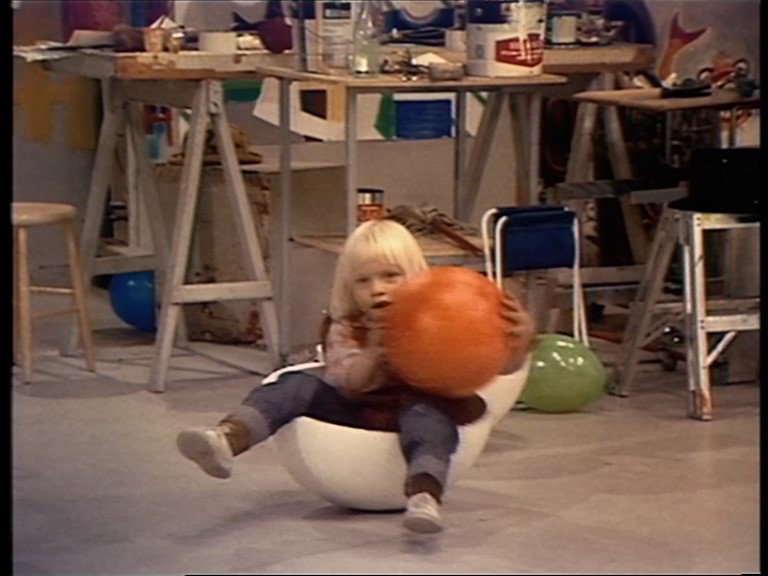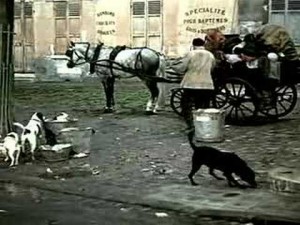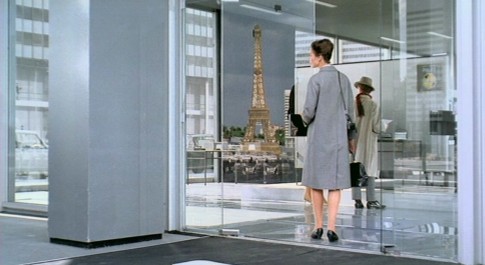From the Summer 2000 issue of Cineaste, Vol. XXV, No. 3. — J.R.
Jacques Tati
by David Bellos. London: The Harvill Press, 1999. 382 pp., illus. Hardcover: £25.
In some ways, this is a better biography of Jacques Tati than we had cause to expect from anyone — certainly a more cultivated one than the useful if relatively lowbrow efforts of James Harding in English (1984) and Marc Dondey in French (written with the assistance of Tati’s daughter Sophie Tatischeff, 1993). So it’s all the more regrettable that no American publisher or distributor to date has shown any interest in making this English book available. Even more unexpectedly, the author — who currently teaches in the departments of Comparative Literature and Romance Languages at Princeton — is best known for his work on Balzac (a survey of French criticism over the second half of the nineteenth century) and Georges Perec (a major biography and a good many translations). In fact, there are even a few unforced allusions to Balzac and Perec threaded through this text.
But why Tati? Conceding in his Preface that he isn’t a film critic, a film buff, or a filmmaker manqué, Bellos makes no claims for offering any “last word” about “one of the outstanding creators of the 20th century,” but admits to some curiosity about the sturdiness of the few films Jacques Tati made as an oeuvre — “a set of films which, taken together, is much more than the sum of its parts.” I would argue that this is a quality Tati shared with Dreyer, Welles, and Kubrick — a capacity to keep changing while deceptively maintaining the same inner logic so that years would sometimes pass between these filmmakers’ innovations and the public’s capacity to absorb them.
Alas, as one was recently reminded by the disparity between Michael Herr’s brilliant memoir about Kubrick in Vanity Fair and his misguided efforts a few months later in the same magazine to defend the eminently defensible Eyes Wide Shut, personal intuitions about an artist don’t necessarily translate into critical insights. On the whole, I would say that Bellos conveys a good sense of what makes Tati’s first four features tick and endure and, relatively speaking, a certain amount of puzzlement when it comes to Trafic and Parade. Given how many years it’s taken for me to appreciate the latter film, I can readily sympathize. (It wasn’t until a fellow critic, David Ehrenstein, pointed out to me that you can’t determine when anything starts or stops in Parade that I began to have an inkling of how its radical populism and its formal innovations mesh.) Dealing with Trafic, Bellos plausibly relates the film’s climactic pile-up to Tati’s own auto accident, and copes admirably with the melancholy implications of the final shot, but, as in his treatment of Parade, he can’t quite rationalize the apparent chaos of the film’s shoot with the clarity of an evolving conception.
Bellos’s lack of a film-related background limits some of his descriptions as well. Dealing with the improvised segment with two small children that practically ends Parade, he writes “tracking shots” when he means “pans” and “close-up when he means “medium-shot.” And though he generally seems quite careful with his facts, a misreading of my own account of working with Tati as “script consultant” in the early Seventies, which was probably too vague to begin with, leads to a couple of errors in one short paraphrase: “Not a great deal got written during that long month,” he writes of our stint together, when in fact nothing at all got written over a short week or two at the most. And he confuses Tati’s sound inventiveness with reality when he concludes that, just because he had synthetic black-leather chairs like the ones in Playtime in his office, they also “gave out a satisfying swoosh when you sat in them.”
Nevertheless, Bellos seems better attuned than his predecessors to the elusive character of an intuitive autodidact and late bloomer who didn’t even become a filmmaker until he was forty. Though he manages to omit my favorite anecdote in Harding’s biography — Tati following around dogs for days, just to see what they did, as “research” for the opening of Mon oncle — he has useful things to say about the abortive color process used for Jour de fête (“actually more of a scam than a gamble,” according to Bellos, due to the gullibility of the producer), the theory of color that Tati developed in the mainly monochromatic design of Playtime, the relevance of “Flaubert’s dream of a book about nothing” to Mr. Hulot’s Holiday, and the terrifying fact of Tati passing out cold as soon as he completed the horse-and-rider, the last of the music-hall pantomimes he re-created for Parade.
Though it never stoops to hagiography, this is a book about an artist more than a show-biz biography, and that is its strength. It’s characteristic both that Bellos mentions that Tati was having an affair with his leading lady in Playtime and that he doesn’t make a big deal of it.

